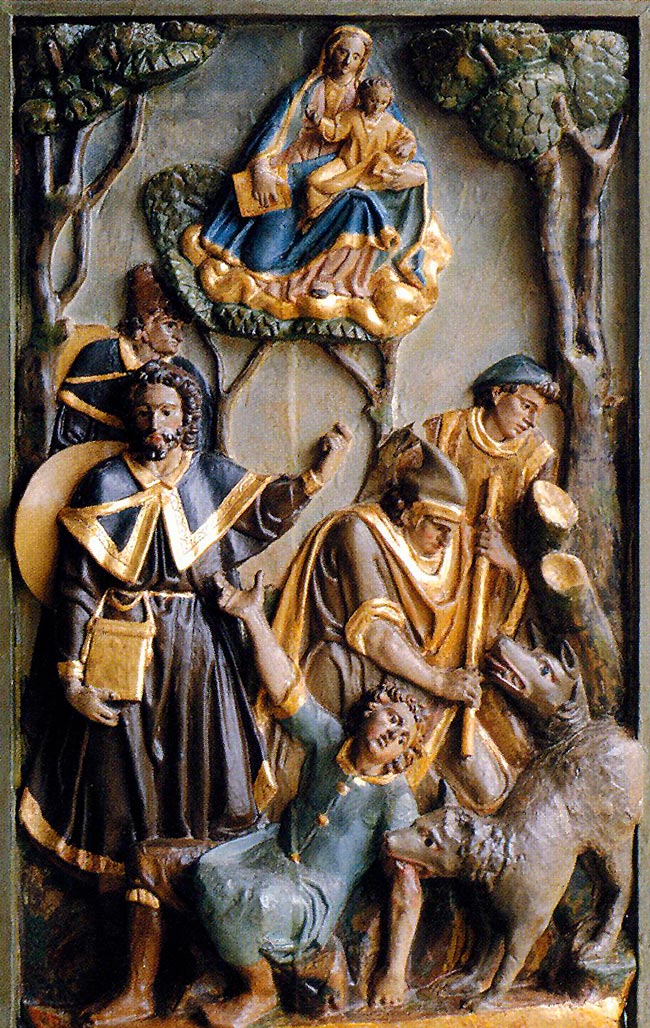Pilgrims from four hundred years ago seen by a canon observer at Roncesvalles

FotoRoncesvallesunder a large layer of snow. Photo Bibiano Esparza/
The canon and sub-prior of the collegiate church of Roncesvalles between 1598 and 1625, Juan de Huarte, trained at the University of Salamanca, a tireless writer and chronicler, gives us an account, through many years of experience at the beginning of the 17th century, of his perception of the pilgrims who passed through the collegiate church. The text of his chronicle, published only in part by Javier de Ibarra, provides us with an accurate and intelligent description of the pilgrims who came to the collegiate church and its hospital.
The vividness of the account brings it close to a letter and it is a real delight to find documents like this subject, especially for those who, like the undersigned at discipline of art history, have to deal with more laconic sources such as accounts or more distant ones, such as contracts or judicial processes.
|
Pilgrims attacked by wolves. Detail of the engraving of the Virgin of Roncesvalles, second half of the 17th century. |
The aforementioned sub-prior distinguishes four types with great capacity for observation, analysis and reflection. In the first he includes the true ones, but warns of the great difference between the ancient ones "and those of these times, because the ancient ones, as true Christians and zealous for the salvation of their souls, made their pilgrimages in a holy manner, moved by holy ends, with proportionate means to achieve them, some for penance for their sins, others to venerate the pious places in which God had shown his mercy in aid of the faithful and confusion of the unbelievers, working miracles; others for honouring the Virgin Mother of God, the holy apostles, visiting their sepulchres and relics, and those of many other saints, and especially that of the Holy Sepulchre in Jerusalem with the other places sanctified by the presence of Christ our Lord. I well understand that still in these times there will be many pilgrims who will make their pilgrimages for some or all of these holy purposes, but they are very rare".
In the second class he includes vagabonds, idlers, wastrels, useless, bad workers, vicious people "who are neither for God nor for the world" and banished from their lands. With a average sotanilla, a slavina, zurrón, calabaza and bordón, together with a partner, pretending to be married, "they travel all over Spain, where they find people more charitable than in other parts of Christendom". In the same subject he lists those who go all their lives with degree scroll as captives, deceiving the simple people with stories of what they suffered in Algiers, Constantinople or Morocco, in the lands of the Turks and Moors, always pretending a thousand lies.The third corresponds to the labourers who come from France and northern Europe. Remember that, if they come from Bearne, they never say so, claiming to be from the Christian lands of France. They do not come in a true spirit of pilgrimage, but only to support themselves in Spain and accompanied by their wives and children. He identifies them as farmers who, once the sowing is finished so as not to spend money on their houses or not to have any, dedicate themselves to going around singing couplets and songs until harvest time. In this same section he brings together the French hawkers, called merchants, "a very bright people like nettles among weeds, among Christians they are Christians and among heretics, like them". They are accompanied by bells and rattles and with pendants around their necks full of charms and ballads, and lastly, in fourth place, there were the most pernicious "for being heretics", both principal and commoners. The first were moved by curiosity to see Spain, by their condition of spies in times of war and disguised in the habits of friars and with staffs and slaves. They never entered the church, nor did they take off their hats in front of the temple, and if they did, it was out of mere curiosity "to see the antiques of Roland and Oliberos", simulating Christian ceremonies in order to be admitted to the hospital. The latter were many and from different groups: labourers, cavacequias, paleros, guadañeros and stockbreeders, generally from Béarn, who came to Castile and Aragon. When they had finished cutting the hay, they returned home with the money they had earned. Both on the outward and return journeys, they stopped at Roncesvalles, where they received rations at the hospital.
|
Relief of the main altarpiece of Roncesvalles, by Garpar Ramos and Victorián de Echenagusia, 1623. Photo Bibiano Esparza |
To find out more
IBARRA, J. de, Historia de Roncesvalles, Pamplona. Talleres Tipográficos de La Acción Social, 1935.
HUARTE, J. de, Historia de Roncesvalles, 1617, manuscript of file-Library Services de la Colegiata de Roncesvalles.


